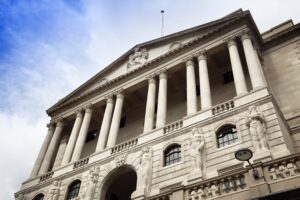Public finances in surplus despite inflation pushing up cost of debt

Tax returns boosted public sector finances last month but inflation pushed up the cost of interest payments on government debt to almost four times its level last year.
The government recorded a surplus of £2.9 billion in January thanks to an uplift from self-assessment receipts, figures from the Office for National Statistics (ONS) show.
Economists had predicted an even higher surplus of £3.5 billion, but soaring interest payments and spending on healthcare increased government costs despite a stronger economic recovery than expected after the onset of the Omicron coronavirus variant.
Borrowing between April and January reached £139 billion, below the Office for Budget Responsibility (OBR) forecast of £156 billion. Michal Stelmach, senior economist at KPMG, said he expected that next month the OBR would revise down its projection for borrowing for the 2021-22 financial year by about £20 billion.
However, he added: “That windfall will be spent almost entirely next year on the government’s £9 billion package of support to help households with rising energy bills.”
About 20 per cent of taxpayers did not submit their self-assessment tax return on time this year because of the one month extension granted by the Treasury, which allows anyone who files online by February 28 to avoid a penalty fine.
This means that public sector finances in February and March will be flattered by higher levels of tax receipts than is usual for the time of year.
Interest payments on government debt rose to £6.1 billion in January, a rise of 287 per cent on the £1.6 billion recorded in January last year. The increase is largely because of a rise in the retail prices index, which determines payouts on index-linked gilts.
Inflation in consumer prices, which was at 0.7 per cent in January 2021, has reached 5.5 per cent, according to the latest ONS figures published last week.
Samuel Tombs, chief UK economist at the Pantheon Macroeconomics consultancy, predicts that interest payments in the 2022-23 financial year will exceed the OBR’s projections by £25 billion.
“The rising cost of making interest payments on the existing stock of debt explains why the chancellor’s package of measures to help with energy bills, £4.5 billion in non-repayable grants and £5.5 billion in energy bill loans, was so modest, and underscores that the forthcoming fiscal squeeze is not about to be relaxed,” he said.
Inflation, which is set to rise to a peak of more than 7 per cent in April, will continue to put pressure on public sector finances as rising debt interest costs lead to higher levels of borrowing in the coming months.
The government spent £76.3 billion in January, far above the OBR’s forecast of £67.7 billion, but downward revisions to previous data pushed down the cumulative borrowing for the present financial year.
Bethany Beckett, UK economist at the Capital Economics consultancy, said: “Based on the data for the fiscal year so far, cumulative borrowing in 2021-22 looks set to be £17.7 billion lower than the OBR’s forecast of £183 billion, so around £165 billion.
“But we expect the combination of higher inflation and interest rates to keep pushing borrowing above the OBR’s forecast in the coming months, resulting in cumulative borrowing of £175 billion to £180 billion.
“That will be unwelcome news for the chancellor, who still has two more public finances data releases to go before the spring forecast on March 23.”




